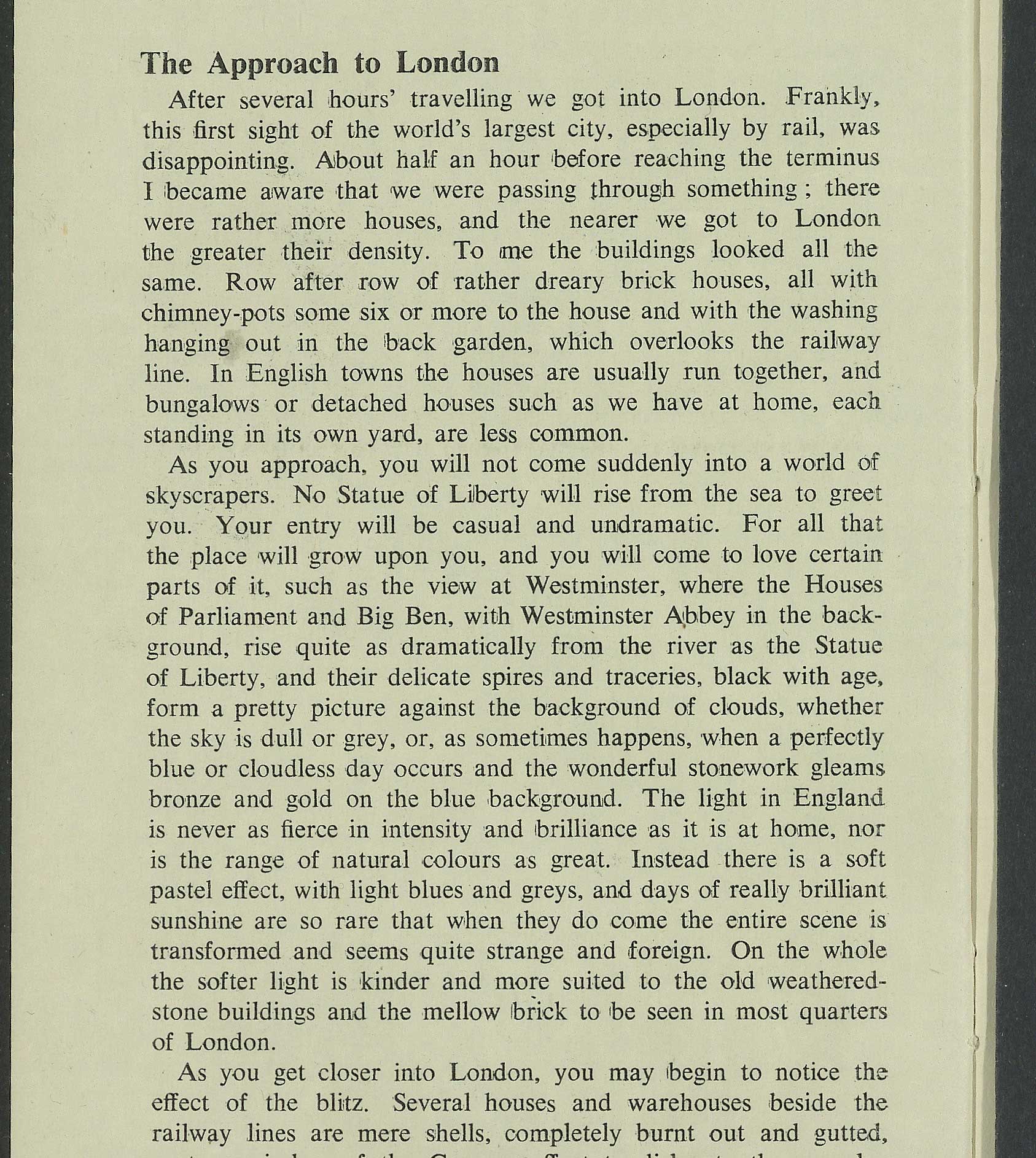
Extract from an information booklet written by H.D. Carberry and Dudley Thompson called ‘A West Indian in England’, Catalogue ref: CO 875/59/1
The booklet aimed to give immigrants information about life in Britain. It was distributed by the Colonial Office to colonies in the Caribbean, 1949-1951. This part describes the approach to London for those arriving in the country for the first time.
Transcript
(a)
The Approach to London
After several hours’ travelling we got into London. Frankly, this first sight of the world’s largest city, especially by rail was disappointing. About half an hour before reaching the terminus I became aware that we were passing through something; there were rather more houses, and the nearer we got to London the greater their density. To me the buildings looked all the same. Row after row of rather dreary brick houses, all with chimney pots some six or more to the house and with the washing hanging out in the back garden, which overlooks the railway line. In English towns the houses are usually run together, and bungalows or detached houses such as we have at home, each standing in its own yard, are less common.
As you approach, you will not come suddenly into a world of skyscrapers. No statue of Liberty will rise from the sea to greet you. Your entry will be casual and undramatic. For all that the place will grow upon on you, and you will come to love certain parts of it, such as the view at Westminster, where the Houses of Parliament and Big Ben, with Westminster Abbey in the background, rise quite dramatically from the river as the Statue of Liberty, and their delicate spires and traceries, black with age, form a pretty picture against the background of clouds, whether the sky is dull or grey, or as sometimes happens, when a perfectly blue or cloudless day occurs and the wonderful stonework gleams bronze and gold on the blue background. The light in England is never as fierce in intensity and brilliance as it is at home, nor is the range of natural colours as great. Instead, there is a soft pastel effect, with light blues and greys, and days of really brilliant sunshine are so rare that when they do come the entire scene is transformed [changed in look] and seems quite strange and foreign. On the whole, the softer light is kinder and more suited to the old, weathered-stone buildings and the mellow brick to be seen in most quarters of London.
As you get closer into London, you may begin to notice the effect of the blitz. Several houses and warehouses beside the railway lines are mere shells, completely burnt out and gutted [smashed]…
…
- How do the writers describe first impressions of London for a visitor?
- Why does London seem disappointing?
- What is the difference between England and the Caribbean according to the writers?
- What effects of the ‘blitz’ were seen in London?
- Why do you think this booklet was made?
